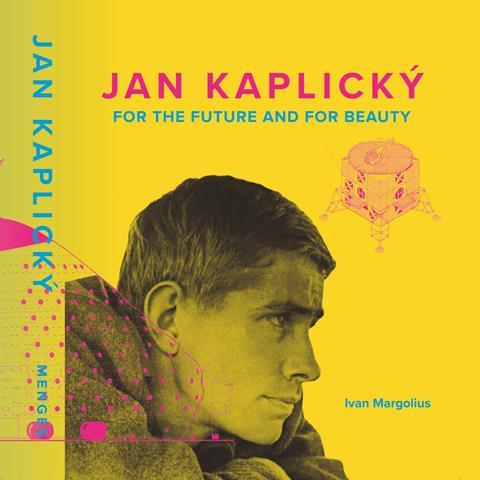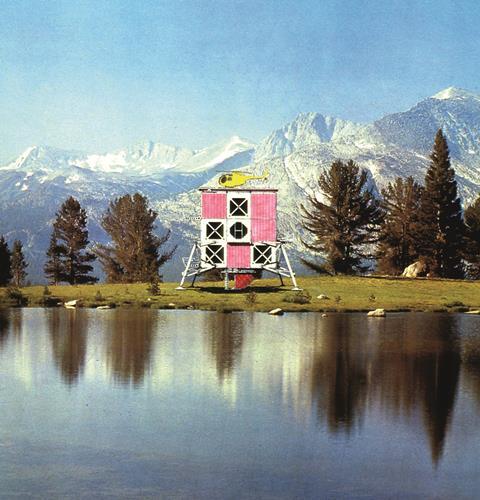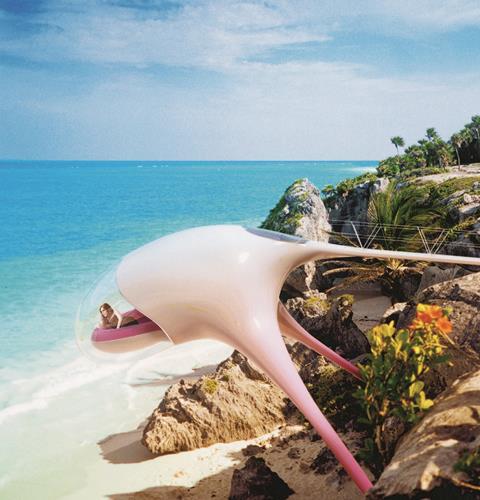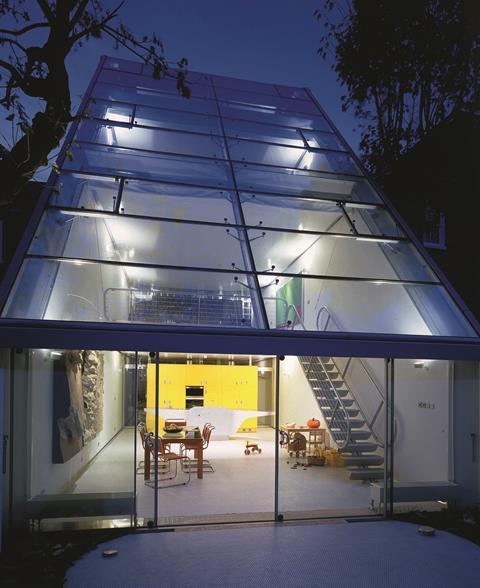A new book on Jan Kaplický brings a much needed focus on his life and work, write Rachel Stevenson and David Miller

This comprehensive book about the life and work of Jan Kaplický comes at a moment when it feels as though the memory of his architecture has fallen by the wayside. He would almost certainly have heartily disapproved of the polite brick façade architecture that we see going up everywhere now.
Being reminded of just quite how extraordinary his visionary architecture was, feels like visiting a different era, although not necessarily the “future” of his practice’s name, Future Systems. In one of the book’s interviews, architect and friend, Richard Horden, describes meeting Jan as “like meeting [the] modern movement”, an apt description of this most singular, uncompromising and, above all artistic, architect.
At first glance, the book looks like some of the many earlier publications about the work of Future Systems. The title and brightly coloured graphics could be from Jan’s own hand, but the similarity ends there. Rather than being focused on the archive of built and unbuilt project work, the emphasis is very much on Jan’s life and personality, taking the reader through his early childhood and youth in Prague, his early days of practice in Czechoslovakia, his move to the UK and years in London and subsequent return to the Czech Republic.

Extensively researched, the book is written by a close friend of Jan’s, Ivan Margolius, and it alternates between his account of events, and interviews and reminiscences of friends and colleagues through the years. Margolius adds a lot of historical context, providing background both on Jan’s life and the wider political situation in the Czech Republic. He also paints a vivid picture of what it means to be an exile and how that might have played into the work.
Having both worked with Jan at Future Systems for a number of years, we found it was a good read, bringing new insights, in particular about his early years and family. It is full of gossip (which Jan would have appreciated) and the interviews have lots of funny and very telling stories, providing an affectionate and sometimes poignantly sad picture of him.
Many memories chime – the quiet concentration in the office, the fact that Jan sat drawing all day every day, his boyish passions, and the ease and enjoyment to be had in working with someone who is so sure of his own mind - Jan’s whispered refrain as we went into client meetings was always “Don’t give them options!”.

It’s also a reminder of a particular moment in history and of the huge influence that Jan had on his contemporaries and on the entire architectural scene. There is still a lot to be learnt from Jan Kaplický’s clarity of vision, and his skill in communicating that vision, in which he is unsurpassed.
Another way that this book differs from previous books about Kaplický and Future Systems is that it’s a long read. It tries to cover everything and include everyone and, whilst this is admirable and the interviews are a definite highlight, you can’t help but feel that it could have been more streamlined.
This is most evident in the coverage of the actual projects, which is broadly chronological with projects interspersed within the overall story, but which comes across in a slightly confusing and repetitive way. It would have been nice to have had a clearer visual overview and more detailed captions to tie the images to the text, especially for those less familiar with the work. At times, it feels like a book that doesn’t quite know what it is because it is trying to cover so much. It could have benefitted from more of the organisational rigour and clear logic that Jan himself would have applied.

Nevertheless, this is a valuable contribution that will appeal to enthusiasts of Future Systems’ work and to those with an interest in late 20th Century architecture. For those unfamiliar with the work of Future Systems, it gives a good overview and would inspire interest, but should probably be read alongside some of the earlier publications.
For those who knew him, it’s a welcome return to an extraordinary talent. As Amanda Levete says in her tribute, “Jan was a giant on the world architectural stage”. He was, and let’s hope that this book helps to put his name back up there.
Postscript
Jan Kaplický: For the Future and For Beauty by Ivan Margolius is published by Edition Axel Menges.
Rachel Stevenson is senior architect and head of interior design at David Miller Architects. David Miller is director of David Miller Architects. They are both former employees of Future Systems.
















No comments yet